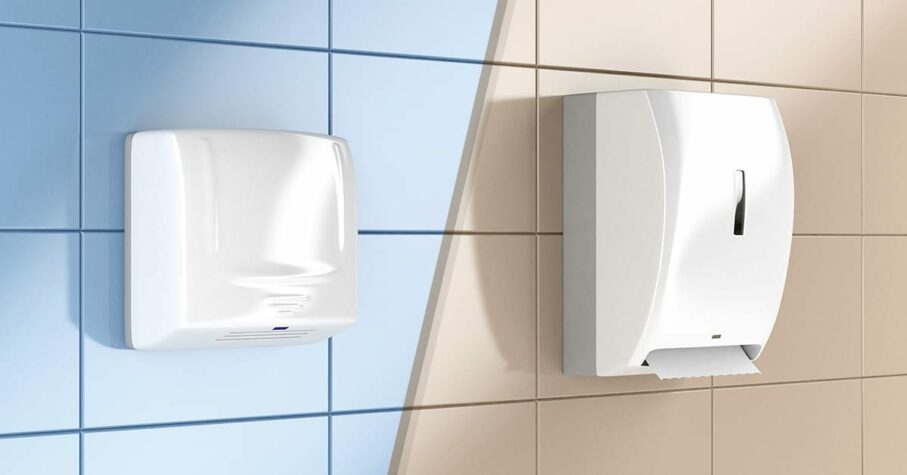
By Paul Taylor | Special to The Globe and Mail
The question: When I’m cleaning my hands in a public washroom, is it more hygienic to dry them off with a paper towel or to use an electric air blower?
The answer: There is no doubt that handwashing is one of the most effective ways to stop the spread of germs. But if you immediately recontaminate your hands, it sort of defeats the purpose. So, infectious-disease experts have put a lot of thought into the best handwashing techniques, including the final step – drying.
The latest study on the question, published in the journal Applied and Environmental Microbiology, comes from a team at the University of Connecticut’s School of Medicine.
The researchers carried out a series of experiments in which they collected bacteria samples from 36 men’s and women’s washrooms located in the university’s basic science research areas. As part of the study, they placed bacteria-collecting plates about a foot away from the hot-air dryer nozzles – roughly where you would hold your hands – for different periods of time. In some tests, the dryer was turned on, and in others, it was off. The researchers then waited for the microbes to grow and counted how many bacterial colonies developed.
The results revealed that far more bacteria accumulated on the plates exposed to the full blast of a blow dryer, with the average of 18 to 60 colonies per plate – and, in some cases, reaching as high as 254 colonies. In similar tests, in which the blower was off, the plates collected an average of zero to one bacterial samples.
“We were basically able to show that bacteria in the bathroom air are drawn into the dryer and then shoot out the nozzle,” says doctor Thomas Murray, one of the senior authors of the study. “So much air is blown through a dryer that it’s literally concentrating the bacteria. And there is the potential to put that bacteria on your hands after you just washed them off.”
The team repeated the tests after HEPA (high-efficiency particulate air) filters were installed on the dryers. The filters, which are used in some commercial forced-air dryers in public washrooms, significantly reduced the amount of bacteria passing through the machines, but they didn’t block all the microbes. Murray notes the amount of bacteria in the air of a washroom at any given time “is highly variable.” It depends on numerous factors, including the ventilation system and how frequently a washroom is used.
Other researchers have found that bacteria can be aerosolized when a lidless toilet is flushed. That means bacteria and other particles in the toilet can be mobilized into the air until they settle back down on surrounding surfaces.
So, should you be worried that hand blow dryers pose a threat to your health?
“If you’re a person with a properly functioning immune system, the risk of getting a serious infection is pretty low,” says Murray, who is also an infectious disease physician at Connecticut Children’s Medical Center. After all, lots of different types of bacteria can colonize the skin without resulting in illness.
Of course, the chance of harm increases for those with a weakened immune system. People who are using certain medical devices – such as vascular catheters, which provide access for germs to get inside the body – might be put in jeopardy, too. “It’s not always the people in direct contact with these washrooms who are the most at risk,” says Dr. Jerome Leis, medical director of Infection Prevention and Control at Sunnybrook Health Sciences Centre in Toronto. Indeed, he adds, contaminated hands can spread bacteria to vulnerable individuals who never set foot in a public washroom.
Murray points out that many institutions have converted to air dryers as a cost-cutting measure. The switch saves on both paper and labour. But there might be a hidden health cost – more germs in public places. After Murray and his colleagues completed their study, the university decided to put paper-towel dispensers in all of its washrooms. “I use a paper towel, whenever possible,” he says.
If the environment is a concern, you can reduce the amount of paper you use by first shaking the water off your hands and then folding over the towel to increase its absorbency.







